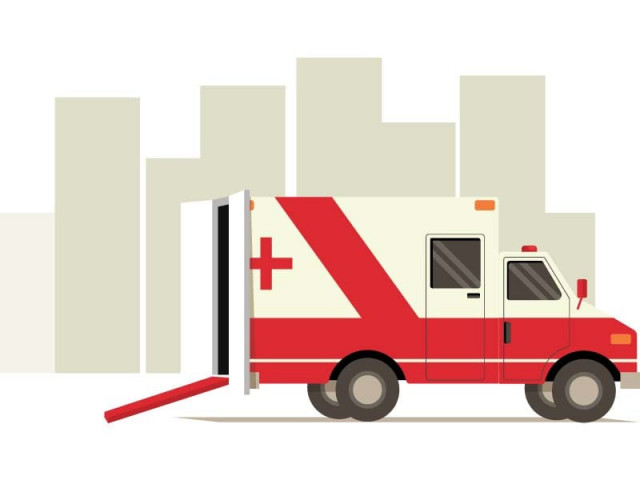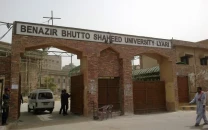Karachi’s struggle for an adequate ambulance service
The port city still needs at least 135 additional vehicles to efficiently deliver emergency medical services

Despite being one of the most densely populated urban metropolises in the country, until the year 2018 Karachi had lacked a public sector ambulance service. During that period, a variety of social welfare organisations were left to fill the gap, leaving the city’s more than 20 million people entirely reliant on the private sector for emergency medical services.
Even as the city’s only hope back then, most of these ambulances were not equipped with the required medical facilities, and neither did they have a paramedic on board. Struggling to cover monumental grounds and largely funded by donations, the most these charitable ambulances could offer was a ride to the hospital at full tilt.
However, it was not until 2009 that the port city welcomed its first, fully-equipped ambulance service, at the behest of a private company called the Aman Foundation. Unlike the charitable ambulances, these vehicles were not makeshift high-roof vans and came with basic life-support, trauma kits, and access to onboard paramedics. This couldn’t have come for free.
Although these modern ambulances soon made their place in the city despite their charged services, Karachi still lacked and desperately needed a public sector alternative. Unable to produce a service of its own, the Sindh government eventually entered into an agreement with the Aman Foundation to acquire their ambulance services for a hefty price tag. The acquisition took place in the winter of 2018, following which the people of Karachi, for the first time in a long time, had access to a proper ambulance service for free.
Read More: Motorcycle ambulance service launched
Per the initial public-private agreement that was valid for a nine-month period, sixty of Aman Foundation’s emergency medical service vehicles were commissioned to transfer patients from their homes to hospitals. In the later stage, the vehicles were to be increased to 200 in total, to transport patients from home to hospital and from hospital to home free of charge. The second stage was slated to roll out in the year 2020, after which service there were also plans to extend the service to other districts of Sindh.
At that time, the Sindh government had paid about Rs35 million for the Aman Foundation’s 60 life-saving ambulances for a period of nine months, while the whole year was billed at Rs50 million to the government. After which, by 2021, Aman Health Services was eventually renamed, and the government established Sindh Rescue Medical Services in its place.
Per Sindh Rescue and Medical Services Executive Director Abid Naveed, considering Karachi’s current population, the city needs a fleet of at least 220 ambulances to efficiently deliver emergency medical services across the port city. Going by the same metric, all of Sindh would require over 500 ambulances. “According to World Health Organization, one ambulance accounts for a population of about 100,000 people. At present Sindh Rescue and Medical Services has a total of 85 ambulances. The Sindh government health department will soon provide us with 250 more ambulances after which we will have 330 ambulances in total,” he told The Express Tribune.
Published in The Express Tribune, May 12th, 2022.


















COMMENTS
Comments are moderated and generally will be posted if they are on-topic and not abusive.
For more information, please see our Comments FAQ